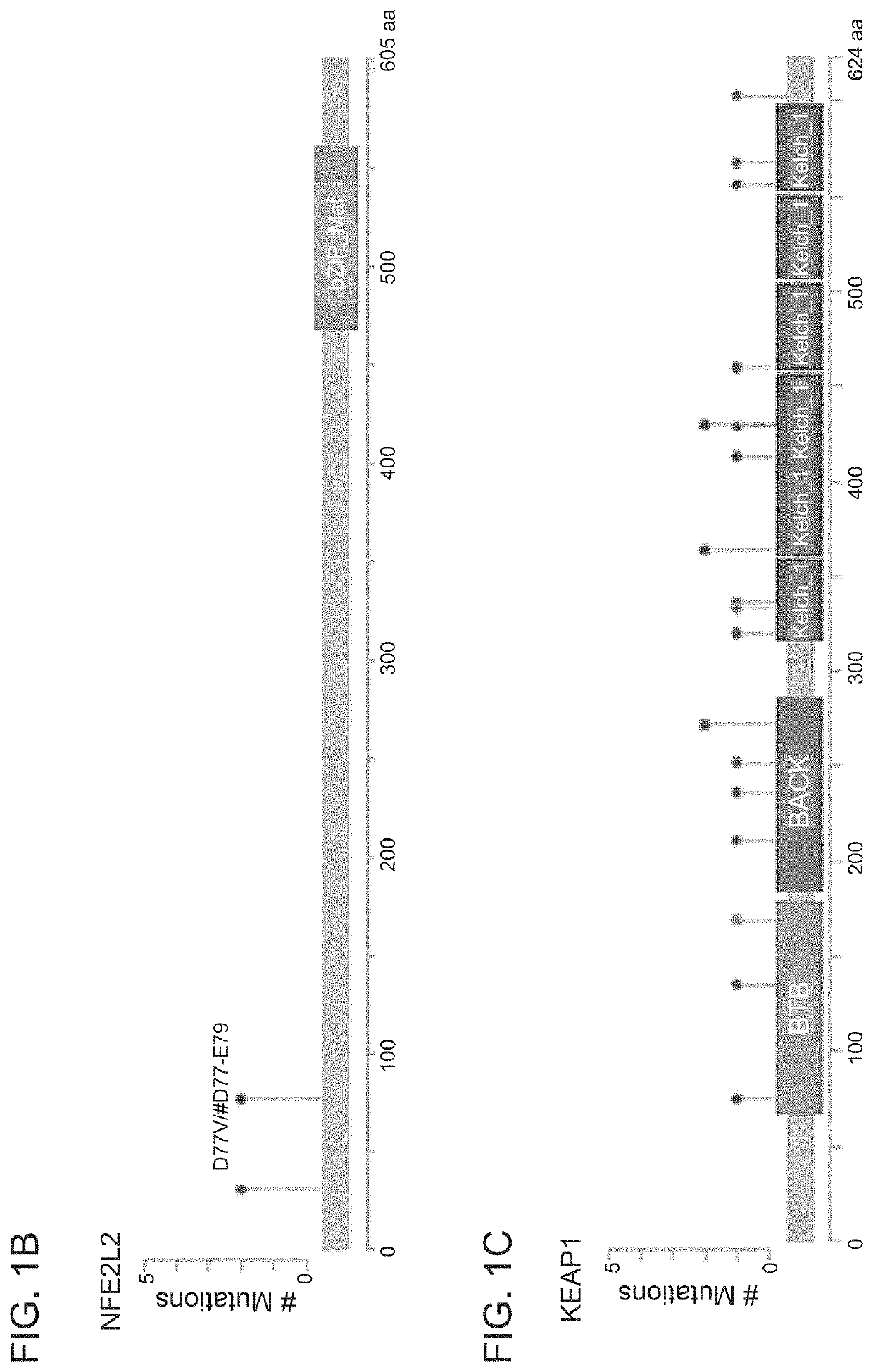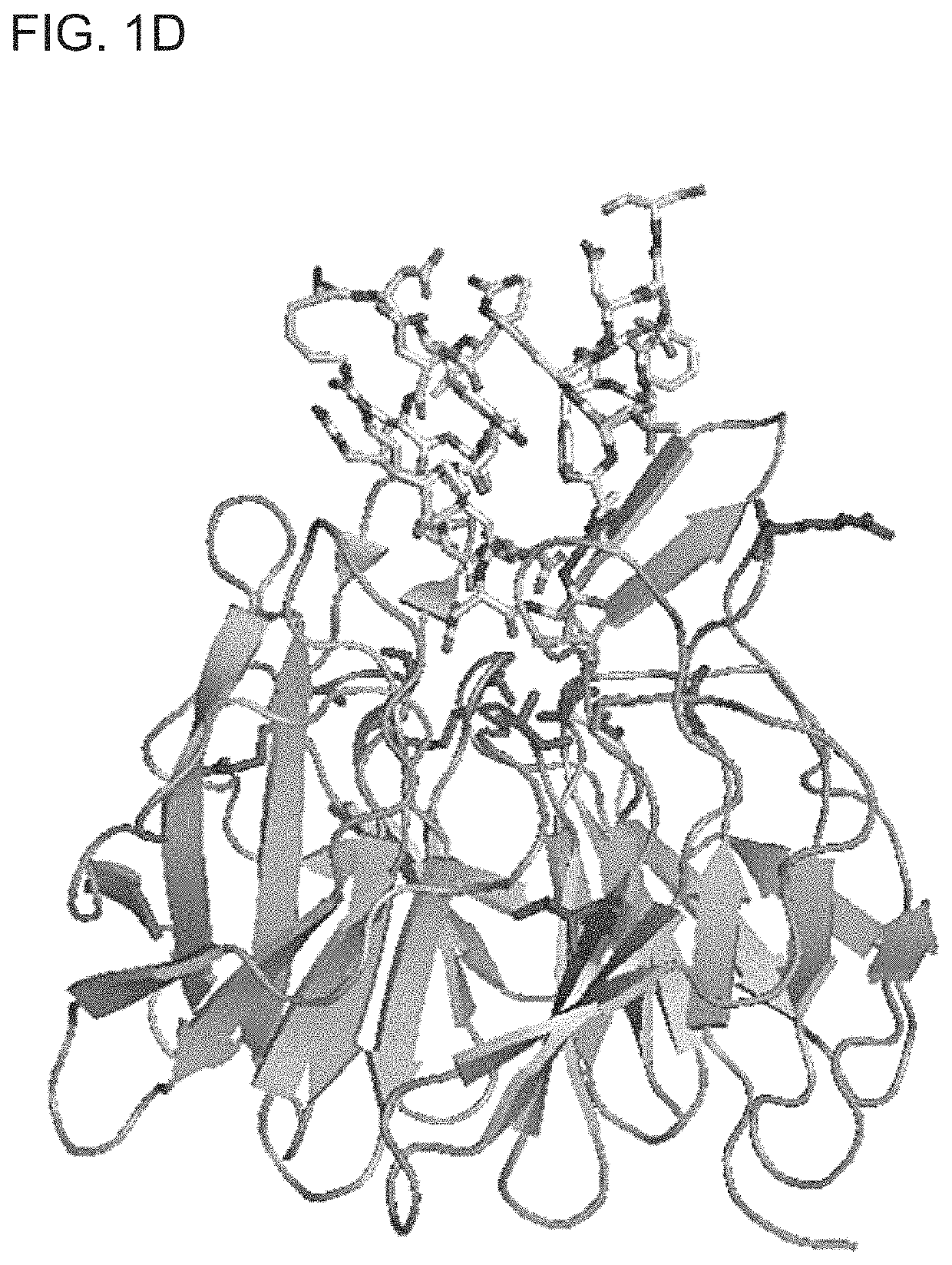Methods for diagnosing and treating cancer by means of the expression status and mutational status of NRF2 and downstream target genes of said gene
a technology of nrf2 and downstream target genes, applied in the field of cancer diagnosis, treatment, and prognosis, can solve the problems of lack of comprehensive understanding of the nature and influence of these mutations on these cellular pathways, and the death of patients, and can not be solved in tim
- Summary
- Abstract
- Description
- Claims
- Application Information
AI Technical Summary
Benefits of technology
Problems solved by technology
Method used
Image
Examples
example 1
Materials and Experimental Methods
[0235]A. Mutation and Copy Number Analysis
[0236]For 99 NSCLC cell lines, non-synonymous mutations and copy number data for KRas, LKB1, KEAP1, and NRF2 were obtained from Klijn et al. (Nat Biotechnol. 33(3):306-312, 2015). Thirteen additional NSCLC cell lines were subjected to copy number analysis. In addition, exome sequencing was applied to 104 NSCLC cell lines. For the cancer genome atlas (TCGA) tumors mutation and copy number data were retrieved from cBioPortal using the R software package CGDS-R (Cerami et al. Cancer Discovery. 2:401-404, 2012; Gao et al. Sci. Signal. 6:11, 2013).
[0237]B. RNA-seq Analysis and Derivation of a Mutant KEAP1 Gene Expression Signature
[0238]Raw RNA-seq data for 99 NSCLC cell lines were retrieved from the European Genome-phenome Archive (accession number EGAS00001000610) (PMID: 25485619). Mutations in KEAP1 and NRF2 in each of the NSCLC cell lines are provided in Table 4. Raw RNA-seq data were downloaded from TCGA and ...
example 2
Identification of NSCLC Cell Lines with Mutations in KEAP1 and NRF2
[0263]To identify mutations, copy number, and loss of heterozygosity (LOH) of KEAP1 and NRF2 in NSCLC, a panel of 113 NSCLC cell lines profiled by RNA-seq, exome-seq, or SNP arrays was documented (FIG. 1A). KEAP1 mutations were found in 29 / 113 cell lines (26%), and NRF2 mutations were detected in 4 / 113 cell lines (4%). Except for the NCI-H661 cell line, all KEAP1 mutated cell lines showed homozygous expression of the mutated allele, which was generally associated with copy neutral LOH. In contrast, the NRF2 mutations were heterozygous and not associated with LOH. A further two cell lines (HCC1534 and NCI-H1437) showed no detectable KEAP1 mRNA through bi-allelic loss of KEAP1 DNA. The NRF2 mutations were in the previously identified hotspots in the KEAP1 interface regions (FIG. 1B) (Shibata et al. Proc. Natl. Acad. Sci. U.S.A. 105:13568-13573, 2008), and comprised point mutations and an in-frame 3-amino-acid deletion....
example 3
Identification of a Mutant KEAP1 Gene Signature
[0264]To determine the transcriptional consequences of KEAP1 mutations in NSCLC cell lines, genes that were significantly differentially expressed (p2) in the KEAP1 mutated cell lines compared to the wild-type KEAP1 cell lines were identified. Overall, 27 genes were significantly up-regulated in the KEAP1 mutant cell lines (FIGS. 2A-2B), 15 of which have previously been identified as NRF2 target genes from ChIP-seq or RNA-seq studies (Chorley et al. Nucleic Acids Res. 4:7416-7429, 2012; Hirotsu et al. Nucleic Acids Res. 40:10228-10239, 2012; Malhotra et al. Nucleic Acids Res. 38:5718-5734, 2010). Only one gene, HSPB1, was identified as significantly down-regulated using these cut-offs.
[0265]Unsupervised clustering of 230 TCGA lung adenocarcinomas based on the expression of these 27 genes resulted in the division of two major groups (FIG. 3A). One group was mainly characterized by high expression of the 27 signature genes, and contained ...
PUM
| Property | Measurement | Unit |
|---|---|---|
| molecular mass | aaaaa | aaaaa |
| volume | aaaaa | aaaaa |
| volume | aaaaa | aaaaa |
Abstract
Description
Claims
Application Information
 Login to View More
Login to View More - R&D
- Intellectual Property
- Life Sciences
- Materials
- Tech Scout
- Unparalleled Data Quality
- Higher Quality Content
- 60% Fewer Hallucinations
Browse by: Latest US Patents, China's latest patents, Technical Efficacy Thesaurus, Application Domain, Technology Topic, Popular Technical Reports.
© 2025 PatSnap. All rights reserved.Legal|Privacy policy|Modern Slavery Act Transparency Statement|Sitemap|About US| Contact US: help@patsnap.com



